I recently visited my 90-something year old grandmother in Victoria, BC and as I stepped into her dining room my eyes immediately focused on a bottle of Gonzalez Byass Oloroso Sherry. Excited, I asked her about it, and she noted that for decades, she’d enjoy a little nip of Oloroso after dinner.
Yes, we’ve heard it many times that sherry is beloved by the elderly generation, it’s something that ‘your grandma drinks’, but you would never dare. Well I’m here to not necessarily de-bunk that myth, but more so provide a fresh perspective on what sherry is, why it’s so delicious and versatile and how it may be making a serious impact on the whisky that you’re currently drinking.
So why sherry? What does it have to do with whiskey? Well, sherry-cask finished whiskies have gained prominence over the last decade, being particularly popular with Scotches and Irish Whiskies. Perhaps you’ve heard a brand story that includes “aged in ex-bourbon barrels and finished in sherry casks” and thought “oooh sounds delicious” but didn’t realllly know what that meant and what impact those cask finishes had on the whiskey.
Did you know that there are a wide variety of sherry types and flavours which create different impacts and taste profiles for whiskey? The intention of this article is to arm you with some information about this type of fortified wine, help you to better understand what flavours to expect and cut through some of the marketing clutter for certain whiskey brands before investing in an expensive bottle. And you may even want to pick-up a bottle of sherry itself to try it out too.
In this article you’re going to learn:
- What is Sherry
- The Name + Where It Comes From
- How the Flavours Develop in Sherry
- How Flor Affects Sherry’s Colour + Flavour
- How Oxygen Affects Sherry’s Colour + Flavour
- Sherry Classification Types
- How to Tell The Differences Between Sherries in a Blind Taste Test
- How the Cask Affects Sherry
- How Sherry Affect’s The Flavour of Whisk
- How to Become a Better Whisky Taster
It’s a lot, I know, but if you’re up for the challenge, start checking out all these juicy details below! Don’t worry, I even have some charts and stuff in there that you can use as cheat sheets.
What Is Sherry?
In short, it’s a fortified wine. What’s a fortified wine? Well, a wine is an alcoholic drink made from fermented grape juice and to fortify it means that you’re adding extra distilled spirit (usually a high ABV grape distillate) to increase the overall ABV.
However, the definition above describes many categories of spirits: sherry, port, madeira, marsala and more.
So what makes sherry… sherry?
The Name + Where It Comes From
Now anytime I can use the word bastardization with context, I’m going to. The name “sherry” itself comes from the bastardization (okay fine, anglicization) of the city Xeres (Jerez). Originally in Jerez (and Spain in general) sherry was known as “sack” which comes from the Spanish word “saca” which means “extraction”. This term, extraction, or saca came from the solera system process for aging spirits.*
On a side note, because I am extremely mature, I just wanted to elucidate that a drier style of sherry back in the day was called “dry sack”… but I digress.
Sherries are made out of three grapes: Palomino fino (which is the predominant grape used), Pedro Ximenez (or PX for short) and Moscatel (also known as Muscat).
Other than what grapes it’s made from, in order for something to be considered a sherry, it needs to be produced in the “sherry triangle” located in the south west of Spain. Similar to something like Scotch, where you can only call it a Scotch if it’s produced in Scotland or you can only call a Bourbon a Bourbon if it’s produced in… no not Kentucky, but rather the continental USA, Sherry needs to be made within an area in the province of Cádiz between Jerez de la Frontera, Sanlúcar de Barrameda, and El Puerto de Santa María.
*Solera system: The technical description is it’s a “multifractional blending system” which in simple terms means that when the spirit is aging, it is put into the first barrel in a long line-up of barrels. Now say the distiller takes half of the contents of the last barrel in the line-up to bottle and sell. This barrel is half full, and so the distiller will fill it up with the second oldest sherry barrel and that barrel will be topped up by the third oldest, and so on and so on all the way down the line.
How the Flavours in Sherry Develop
There are two significant elements in sherry production that help to determine the flavour: exposure to oxygen (oxidization) and whether the sherry is sweetened or not.
So let’s talk about oxidation. After sherry is put into barrels for aging, additional alcohol (grape spirit) will be added to the sherry (which is called fortification) to increase the overall alcohol by volume to somewhere between 15–22 percent. This is decided based on the quality of the sherry.
Shortly after the sherry is put into a barrel, it is sampled and scored based on its quality:
- The sherries with the most delicate taste and finest aromas receive one dash/stroke on the barrel, meaning that they are to only be fortified to 15 percent ABV and used to create a Fino/Manzanilla.
- The sherries that are a bit more full-bodied and possess a strong aroma receive one dash/stroke and a dot, meaning that they are to be fortified to 17–18 percent ABV to create an Oloroso.
- The sherries that need a bit more time to age before they can determine what to develop into receive two dashes/strokes. These will later be developed into either an Amontillado or Oloroso and in the meantime, are fortified up to around 15 percent ABV.
- Finally, the sherries that are not agreeable in flavour/taste receives three dashes/strokes and is distilled into the grape spirit that is used to fortify the sherries above!
So why are some of these fortified to 15% and others to 17–18%? The higher ABV will not allow flor to develop allowing the sherry to be in contact with oxygen, thereby oxidizing the sherry over time.
I know you may be asking, what is flor? Well, flor is a type of yeast that forms a white layer on top of the sherry, stopping it from having contact with oxygen. Flor is not added to the barrels, but rather it naturally forms from indigenous yeasts only found in the Sherry region of Spain and can only thrive when the sherry is between 14.5% and 16% ABV. If sherry is below 14.5%, the flor cannot create a full protective, waxy layer on top of the sherry, and effectively the sherry oxidizes in a bad way and essentially becomes a vinegar. If the sherry is above 16% ABV, the flor cannot survive and the sherry oxidizes, becoming an amontillado or oloroso (the good kind of oxidation).
How Flor Affects Sherry’s Colour + Flavour
During the maturation process for sherry, there are three ways in which sherry can age: (1) under an age of flor (also known as biological aging); (2) with exposure to oxygen (also known as oxidative aging); and (3) a hybrid of both. When we look at biological aging, the protective layer of flor affects sherry in three main ways:
- Keeps the colour lighter: Because the flor protects the sherry from contact with air, creating oxidation, the colour of the sherry remains light and the body of the sherry remains delicate
- The sherry becomes dry: I’m not talking about the sherry being dry versus wet but rather dry versus sweet. Because there are sugars in the grapes which sherry is made from it is naturally sweet to some extent. However, when the flor develops, because it’s a form of yeast, it loves to eat sugar (remember how we talked about how when making whiskey, yeast will eat the sugars and poop out carbon dioxide and alcohol? Don’t remember, check it out here). The same process happens with flor. The yeast eats up the glycerol that is in the sherry, making the sherries very dry and delicate.
- The sherry increases in yeasty, chalky, nutty and green apple notes: So theres two processes that occur with the flor. To get science-y for a second, flor is unique in that it undergoes both anaerobic AND aerobic growth (Anaerobic refers to organisms that do not require oxygen for growth, whereas aerobic refers to organisms that require oxygen for growth). As the flor continues to be in contact with oxygen, the anaerobic fermentation process (the conversion of glycerol to ethanol + Co2) slows and the yeast begins to convert certain acids like acetic acid into acetaldehydes*. These acetaldehydes, which may be a familiar term in talking about whisk(e)y as well, contribute flavours of yeast, chalk, nutty (think green almonds, or raw almonds) and green apple notes in the sherry.
So just to recap, flor, contributes to the colour and flavour of sherry by protecting it from oxygen, leaving its colour and texture light and delicate, while making the sherry dry (in the sweetness scale) and increasing acetaldehydes which contribute to yeasty, chalky, nutty and green apple notes.
How Oxygen Affects Sherry’s Colour + Flavour
There are many other spirits and alcohols where oxidation leads to “off-flavours” and is a negative thing. Sherry is one of the few spirits in which oxidation can create something rich, complex and delicious. Here are the main effects that oxygen have on Sherry:
- Deepens the colour: As the sherry is exposed to oxygen, chemical reactions occur, causing the sherry to become darker over time. What was once a straw-coloured sherry will transition into orange, burgundy and brown hues.
- The sherry becomes rich + round: Round is a word that often describes wines that have developed a good body and texture. As the sherry ages and is exposed to oxygen and each year the liquid evaporates (which in sherry is called “malma” and with whisk(e)y is called the “angel’s share”) making the sherry more concentrated, rich and viscous.
- The sherry increases its nutty, caramellic and ripened fruit notes: Think about the shelf life of a banana. When they’re first harvested they are green and their but over time, as they essentially oxidize, the colour of the banana changes (to yellow and eventually brown) as does the taste. Similarly with sherry, as it’s exposed to oxygen, it begins to age, with those once delicate notes developing into more nutty, caramellic, dark, ripe fruit notes. What was once the green apple, dough and chamomile notes of a flor-covered sherry develops into dried figs, toffee and tobacco.
Again just to recap, exposure to oxygen, contributes to the colour and flavour of sherry by enduring chemical reactions to cause the sherry to darken in colour, evolve into a more rich and round profile and develop flavours of ripened and dried fruits (like figs, raisins, dates, sultanas etc.), tobacco, leather, molasses, caramel, chocolate and nutty notes.
Sherry Classification Types
There are six main varietals of sherry that fall under two classifications (1) Dry Sherries (2) Naturally Sweet Sherries and then these varietals will be sweetened and fall under a third category (3) Sweetened Sherries.
— DRY SHERRIES —
1. Fino Sherry (biologically aged) — Fino, which means “fine” is a very delicate, dry type of sherry. Thanks to that flor, the sherry does not oxidize leaving this type very light and delicate with notes of green apple, almond, yeast, brine and chalk.
2. Manzanilla Sherry (biologically aged) — Similar to Fino, Manzanilla which means “chamomile” is a delicate, dry type of sherry which is exclusively produced around the port of Sanlucar de Barrameda. Because it is produced near a sea estuary, Manzanilla Sherry tends to have a more salty flavour profile than that of Fino sherries and also, surprise surprise possesses notes of chamomile.
3. Amontillado Sherry (hybrid) — Amontillado (am-on-tee-ah-doh) sherry starts out as a Fino or Manzanilla and after it has been aged for a period of time under flor, it is fortified to a higher ABV to stop the flor from forming. From there the sherry is aged oxidatively, giving it some of those apple, citrus and salty notes but with more developed caramel, nut and marmalade notes too.
4. Palo Cortado (hybrid) — Similar to Amontillado, it undergoes both biological and oxidative aging. However, where Amontillado sherry is intentionally fortified to kill off the flor, with Palo Cortado, the flor inexplicably disappears and it continues to age oxidatively. Because of this mysterious aging process, some say Palo Cortado is magical. And if you’re wondering, only about 1–2% of grapes develop into Palo Cortados making them quite rare to purchase. Nevertheless, the resulting sherry is said to have the ‘aromatic refinement of an Amontillado with the structure/body of an Oloroso.’
5. Oloroso (oxidized) — Oloroso, which means “scented” in Spanish is fortified to 17%+ ABV immediately and so flor cannot develop in the barrel. This allows the sherry to develop dark, nutty, dried fruit notes that are complex and rich (as opposed to the fresh, yeasty taste of a fino). While some may think Oloroso sherries are sweet, they actually contain 0–5 grams of sugar/litre. However, because many of the mainstream Oloroso’s are sweetened (whereby making them a Cream sherry… but we’ll talk about that in a second), there is the perception that Oloroso’s are sweet. Furthermore, because they boast such intense dark and dried fruit notes, one can misinterpret the fruitiness as sweetness.
— NATURALLY SWEET SHERRIES —
6. Pedro Ximenez (oxidized) — Considered a “dessert wine”, Pedro Ximenez grapes are left to become extremely ripe (or sun dried) and so the sugars become super concentrated. With these super concentrated, sugary grapes, a thick, black liquid is produced. After maturation, PX possesses strong notes of raisins, molasses and syrup with more matured expressions (think 30 years+) developing meaty and leathery notes.
7. Moscatel (oxidized) — Moscatel sherries are also considered “dessert wines” and are produced in a similar fashion to that of PX. While moscatel wines/sparking are not uncommon, the sherry editions of them are more difficult to find. Nevertheless, after maturation Moscatel sherries develop notes that are floral (like white spring flowers), honeyed and raisiny.
— SWEETENED SHERRIES —
8. Pale Cream — Made predominantly from Fino/Manzanilla sherries and sweetened to about 45–115 grams of sugar/litre.
9. Medium Sherry — Often made from Amontillado sherry and sweetened to 5–115 grams of sugar/litre.
10. Cream — Often made with Oloroso (and sometimes Amontillado) and sweetened to 115–140 grams of sugar/litre.
How To Tell The Difference Between Sherries in a Blind Taste Test
I’m going to simplify this quite a bit but essentially there are two ways to make an educated guess on what type of sherry you’re drinking in a blind taste test:
First by colour:
Second, by flavour:
So in other words, first assess the colour: if it, for example is a dark burgundy or maroon hue, it will most likely be either an Oloroso or Cream sherry. Now take a sip. If it’s fruity but dry, it’s going to be Oloroso. If it’s fruity and sweet/syrupy, it’s going to be a Cream sherry. Boom!
How The Cask Affects Sherry
Sherry is often aged in old American Oak casks, that provide little influence to the flavours of sherry. Finos and Amontillados gain their flavour from the interaction with flor. Oloroso and Amontillado sherries gain their flavours from oxidation and Pedro Ximenez gain their flavours through the raisining of the grapes (that creates sweetness) and oxidation.
Unlike whisky, of which some say anywhere from 50–80% of the flavour is derived from the interaction with wood, the sherry itself, is what helps to flavour the wood which makes sherry casks great for adding additional flavour notes to the whisk(e)y.
Sherry’s Influence on Whisk(e)y
Okay friends, this is the section we’ve been waiting for. You’ve learned about what sherry is, where it’s from, how it gets its flavour and what types there are, so when there’s a sherry-cask finished whisky, what kinds of sherry are used and how does it affect the final profile of the whisky?
As I mentioned above, sherry creates a large impact on the flavour extracted from the barrel when whisky is aged in it. Whether it be fully matured in a sherry cask or “finished” in it, it will pull these flavours into the whisky creating something truly special.
Now when we’re looking at sherry-cask finished whiskies, thus far, the predominant sherries used are Oloroso, Pedro Ximenez or a combination of both. Below is a chart summarizing the flavour impacts of sherry on whisky:
Now you have to remember that while sherry will influence the final flavour profile of the whisky, there are other elements in the whiskeys’ maturation process that are going to affect the full final flavour of it including what grains are used, the duration in the barrel, and what types of barrels were used to age the whisky in addition to the sherry barrel.
That being said, looking at the tasting notes for a number of whiskies you can see certain unique/distinctive flavours cited as part of the tasting notes that come from the sherry, which are highlighted below:
Oloroso Sherry Cask
- Tomintoul 12 (Speyside, Scotland; Single Malt)
Nose: Vanilla, almonds, raisins and the heady scent of a sherry bodega.
Palate: Smooth oaky-fruit balance with a structured layer of delicate sherry. - Dalwhinnie Distiller’s Edition (Highland, Scotland; Single Malt
Nose: Fresh sherry embraces the maltier, more honeyed aspects of Dalwhinnie. Peaty and surprisingly, still heathery. Spicy yet grapy.
Palate: A big spicy buzz, followed by an impressive build-up of very clear, well defined Scotch. After a quick burst of sweetness, a rich, grape effect moves in toward the middle. - Glenmorangie La Santa (Highlands, Scotland; Single Malt Whiskey)
Nose: Warm spice mix with smooth chocolate covered raisins, honeycomb and caramel toffee
Palate: Deliciously sweet sherried flavoured sultanas, orange segments, walnuts and butterscotch combine to create complex warm spices. - Glenlivet Nadurra (Speyside, Scotland; Single Malt)
Nose: Dried fruit, raisins, apricots, cinnamon, liquorice
Palate: Smooth and creamy, spicy orange marmalade, dark chocolate
Pedro Ximenez (PX) Sherry Cask
- BenRiach 17 Pedro Ximenez Sherry Wood Finish (Speyside, Scotland; Single Malt)
Nose: Creamy spices, chocolate and sugar coated almonds over sweet sultanas and dark fruit cake.
Palate: Dark chocolate and freshly ground coffee beans merge with sweet dates and fresh figs. Delightful, peppery vintage oak and warm cigar box spices. - Wyoming Whisky Double Cask (Wyoming, USA; American Whiskey)
Nose: Dark, autumnal notes of dried apricot and fig, stewed prune, black currant and toasted nuts.
Palate: Hints of candied orange peel, vanilla butter cream and molasses. - Laphroaig PX Cask (Islay, Scotland; Single Malt)
Nose: Sherry aroma of sweet sultanas, and raisins with a hint of sweet liquorice.
Palate: Peat and oakiness and a sweeter heavy sherry flavour.
Amontillado Sherry Cask:
- Glenkinchie Distiller’s Edition (Lowland, Scotland; Single Malt)
Nose: Firmer, dried notes from a soft vanilla to a crisp grape. Sweeter, nuttier tones come from the malted barley and cask wood.
Palate: Dry, after early biscuit sweetness. Enormous malt character contrasts with the fruitiness of the grape. - Deanston 11 Year (Highland, Scotland; Single Malt)
Nose: Biscuity malt, ginger nuts, citrus lime, peach, apricot, apple, marzipan, banana bread, fresh and grassy, pineapple fritter.
Palate: Gingerbread with vanilla ice cream, cinnamon, nutmeg, marzipan, toasted flaked almonds, hazelnut puree, malted milk biscuits and leather. - Kavalan Soloist Amontillado Sherry Single Cask Strength (Taiwan, Single Cask)
Nose: Very rich and fruity. Good sweetness with notes of walnut and almond. Slight toffee and a touch of oak.
Palate: More exotic and soft sherry with a hint of caramel. The finish is gently long with nuts and pepperiness.
Fino/Manzanilla Sherry Cask:
- Kavalan Soloist Fino Sherry Single Cask Strength (Taiwan, Single Cask)
Nose: Rich aromas of sherry, creamy toffee, rich chocolate, fruity. Fruitiness is complex with notes of mango, over-ripe citrus with a touch of green apple
Palate: Natural sweetness, gentle fudge, dry smoked wood aromas, natural sweetness, a pleasant mouth-drying sensation. - Tomatin 12 Year 2002 Cuatro Fino Sherry Finish (Highland, Scotland; Single Malt)
Nose: Green apples with a citrus burst of orange and lime. Pear, sweet nuts and coconut, custard and marzipan.
Palate: Savoury and spicy on the palate with a zesty bitterness. - Tomatin 12 Year 2002 Cuatro Manzanilla Sherry Finish (Highland, Scotland; Single Malt)
Nose: Chewy vanilla marshmellows, rich dried dates, crunchy pears and lemons, reminiscent of haystacks.
Palate: Oily and doughy, lemon sponge, green olives, pepper and toasted pine nuts. - Glenfarclas 1966 Fino Cask (Speyside, Scotland; Single Malt)
Nose: Almonds, vanilla toffee, honeysuckle, nutmeg, milk chocolate. Nutty and yeasty notes develop, along with citrus oil and dry toast.
Palate: Old oak, leafy ferns and barrel char, balanced by peach, ripe pear, boiled sweets, citrus honey and lemon zest. Dark liquorice and sweet woody spice.
The Bottom Line: How To Become a Better Taster
So if you’re not an expert taster (like 99% of the population) what this article teaches you is the art of anticipating a flavour profile. Perhaps when you try a new dram is smells like “whisky” to you. Maybe you get notes of oak and grain (because it’s made of grain and aged in oak) but you want to increase your repertoire. Well with this knowledge of sherry, before tasting your next sherry-cask finished whisk(e)y, you should be able to anticipate what flavours will be incorporated into the aroma and taste of it (so you can sound like an expert… or at least impress your friends).
This will not only help you mentally identify these flavours as the present themselves when you’re trying the whisky and help to develop your scent memory recognition, but it will also help you become a better taster over time.
As Gustav Flaubert once said, “pleasure is found first in anticipation, later in memory.” I hope that you enjoyed this article, if you have any questions, please let me know below or connect with me via email.
xoxo

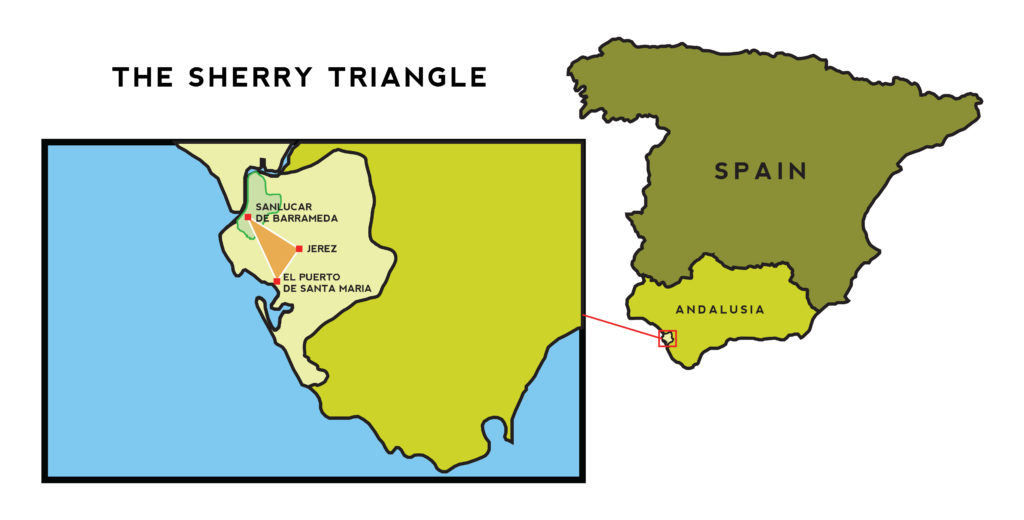
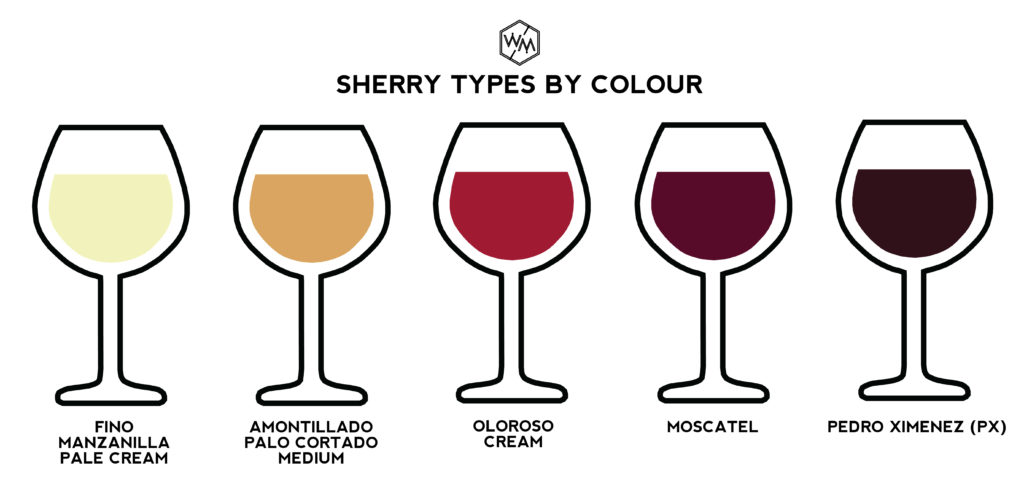
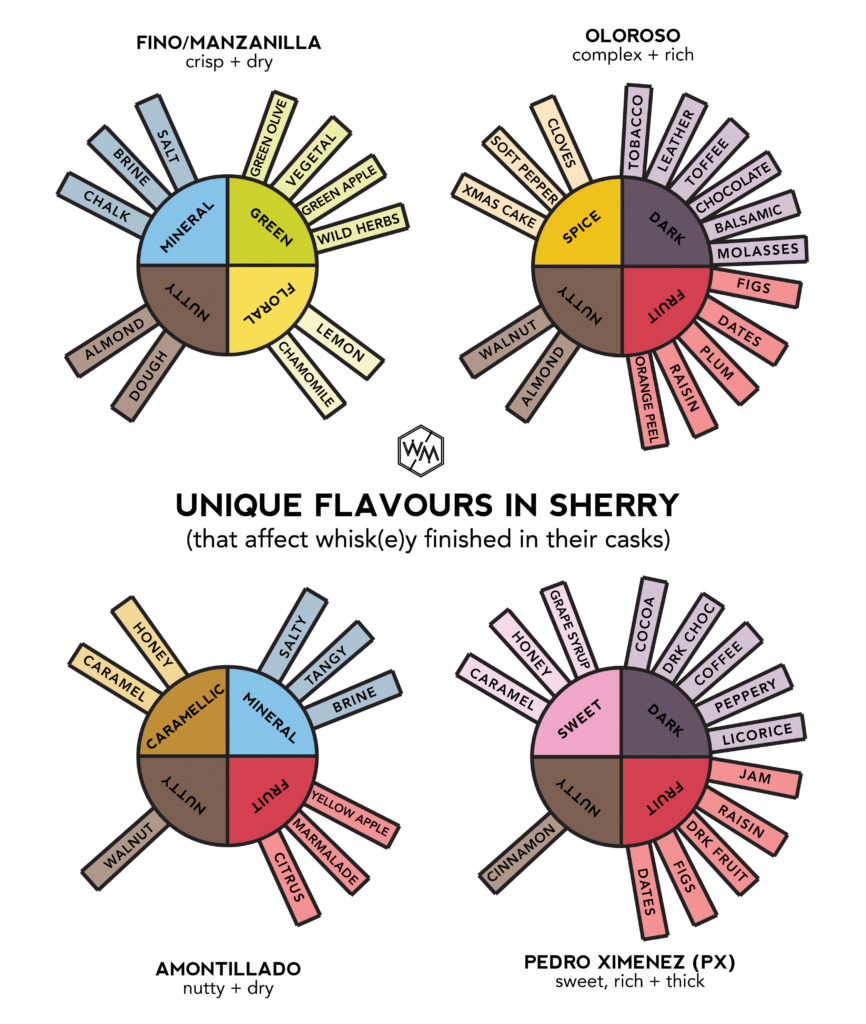
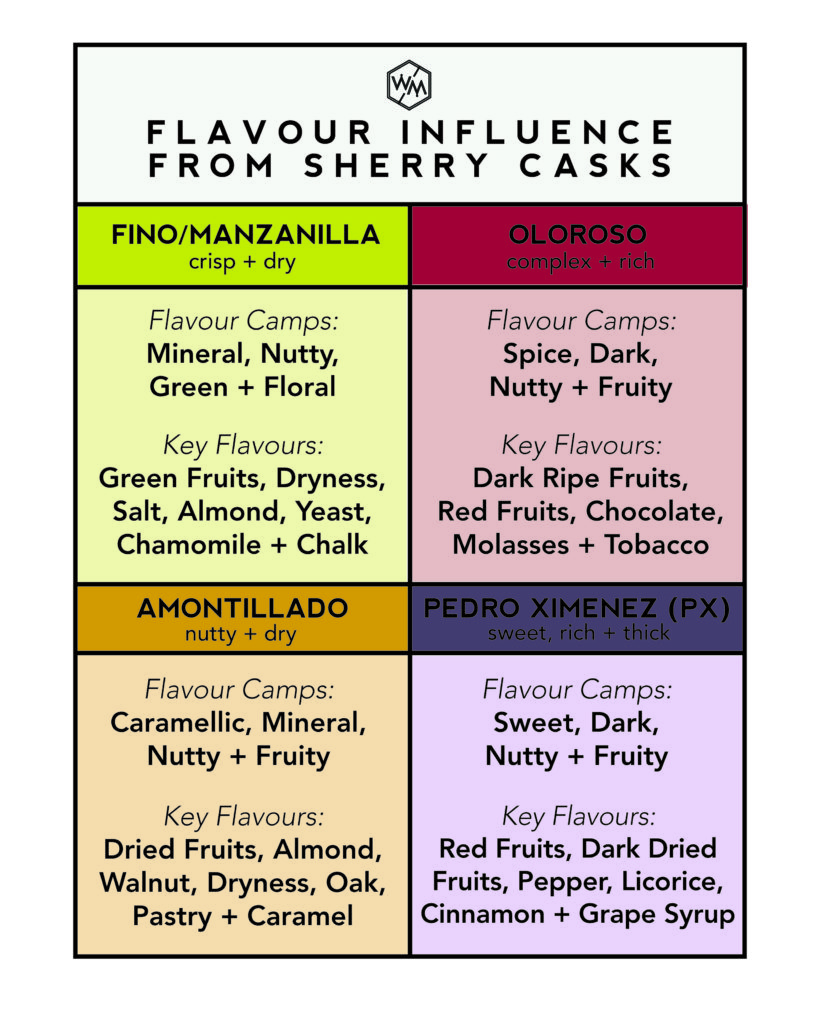

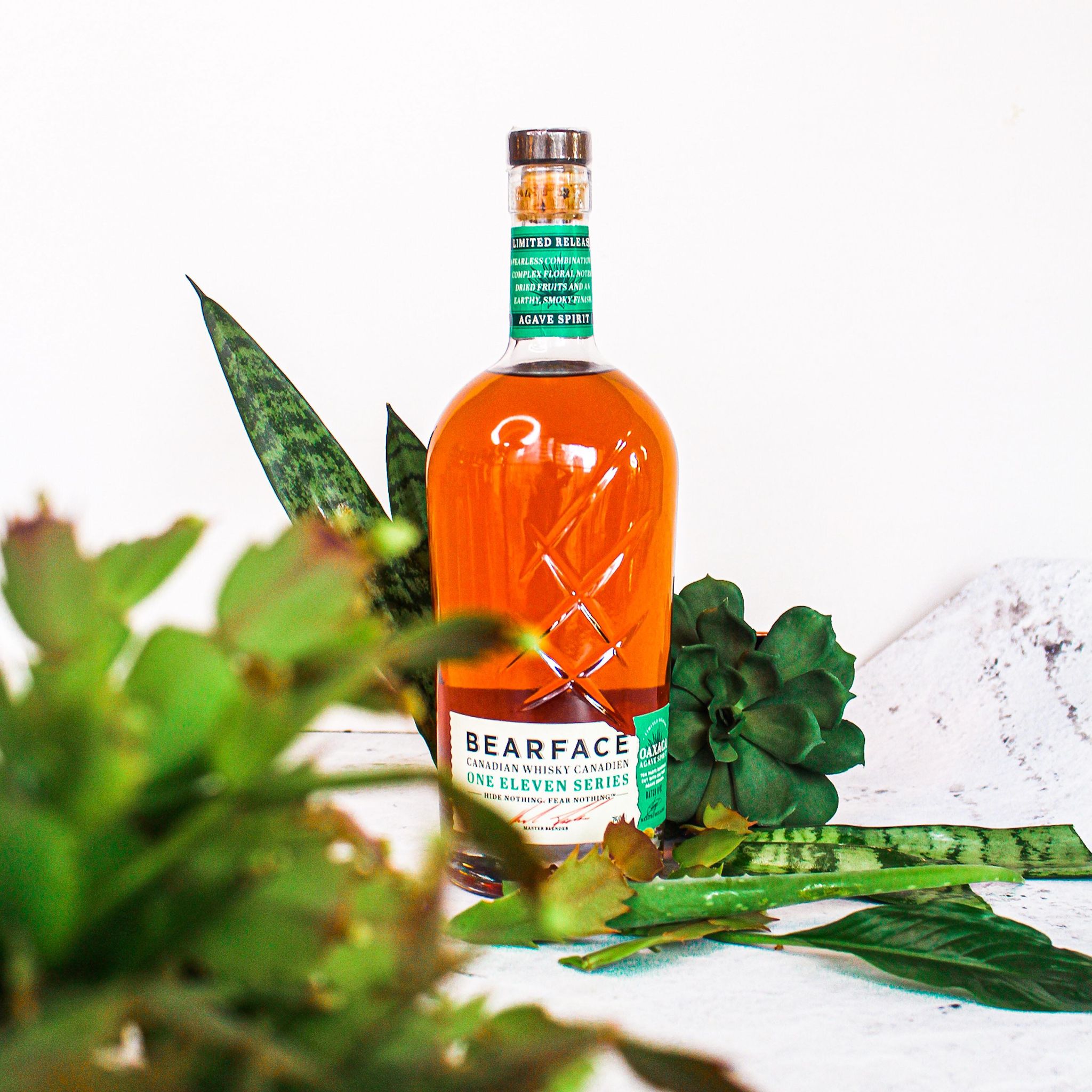
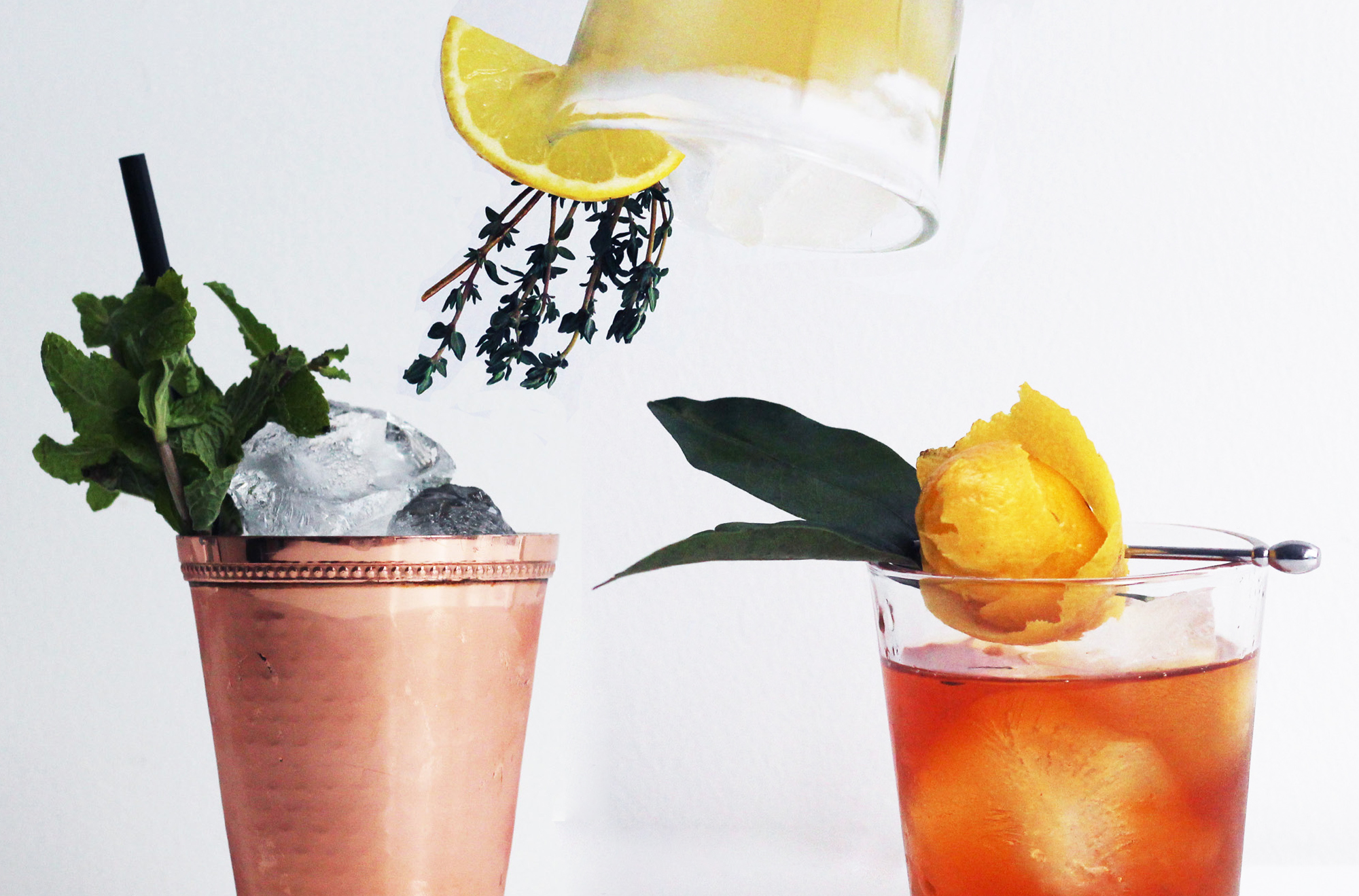
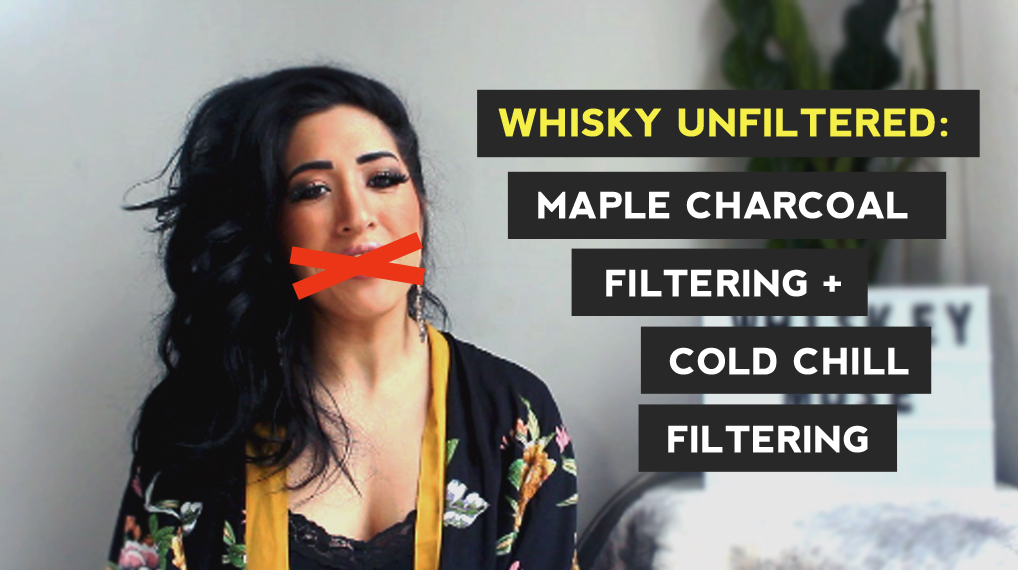

[…] Colors of Sherry […]